Winter puts our endurance to the test. To effectively resist the cold, your body requires impeccable sports nutrition specially adapted to this demanding season.
- Your body uses more energy to maintain your body temperature
- Dehydration occurs discreetly without a marked feeling of thirst
- Immune defenses are more vulnerable to viruses
This guide answers 10 crucial questions to help you prepare for your winter activities. Our goal is to give you all the keys to staying strong as a mule despite the biting cold.
Ready to discover our tips? Let's go.
Why do you burn more calories during exercise in intense cold?
After a long outing in cold weather, you probably feel intensely tired and ravenous—much more so than after the same effort at 20°C. This feeling isn't imaginary; it's a normal physiological reaction.
Your internal boiler is running at full capacity
Your body works like a well-insulated house that must maintain its body temperature at 37°C. In winter, your metabolism works harder to compensate for heat loss by drawing on your precious glycogen reserves.
During winter exercise, you experience a double energy expenditure :
- The energy required for physical effort
- The energy needed to warm you up
Studies show that this overconsumption can increase from 10% to more than 40% depending on the intensity of the cold and your equipment.
The trap: running out of fuel without warning
The main mistake? Applying the same nutritional strategy as in the summer. Your glycogen reserves, which are supposed to last 3 hours, risk being depleted in 2.5 hours, or even less, due to this invisible overconsumption.
The result: the famous "wall" of the runner or the terrible hunger of the cyclist which transforms the end of the outing into an ordeal.
Cold-adapted nutritional strategy
The solution ? "Feed your internal boiler" more generously :
- Anticipate your energy intake : start eating 30 minutes earlier than in summer.
- Increase your carbohydrate intake by 10-20%/h (e.g. go from 60g to 70g/h).
- Never neglect your pre-workout meal : optimal glycogen reserves are your best protection against the cold.
Mulebar energy bars offer just this ideal energy density thanks to their blend of rice syrup, oat flakes and date paste, slow-release carbohydrates perfect for prolonged efforts in the cold.
Winter tip : Slip your energy bar into an inside pocket close to your body. Your natural warmth will keep it soft and easy to eat, even in the bitter cold.

Hydration in winter: why is your body lying to you?
This is one of the major pitfalls of winter sports. During exercise, everything seems normal: no dry mouth like in summer. But when you return, headaches arise, your urine is dark, and your performance has inexplicably declined.
In winter, your body misleads you about your water needs. Knowing how to overcome these false signals is essential to maintaining your performance in the cold.
The Great Paradox of Winter Thirst
The cold scrambles your internal sensors. Two main mechanisms occur:
- Peripheral vasoconstriction : To protect your organs, the body reduces blood flow to the extremities (hands/feet). This response increases central blood volume, which the brain interprets as excess fluid. The result: less thirst but more urge to urinate—this is called "cold-induced diuresis."
- Hidden respiratory losses : Since winter air is dry, your lungs need to humidify it. With every exhale, you lose water without even realizing it.
The Silent Dehydration Trap
Don't assume that only sweating matters. In winter, even if you sweat less, dehydration still exists. It's just more subtle.
Losing just 2% of your water weight can reduce your performance by 20%.
Consequences: racing heart rate for the same effort, increased risk of cramps, and slower muscle recovery.
Smart Hydration Protocol
Rely on strategy rather than feelings:
- Anticipate thirst : Drink 300 to 500ml of low-mineral water before exercise, then 150-250ml every 15-20 minutes during sporting activity.
- Use reminders : Set alerts on your watch every 20 minutes.
- Weigh yourself : Every kilo lost after a long ride is equivalent to about 1 liter of unreplaced water.
- Add electrolytes : Your drink should contain sodium, magnesium and potassium, especially for efforts lasting more than 2 hours.
Drinking ice-cold water at 0°C isn't pleasant. Our Mulebar powdered energy drinks are therefore invaluable in winter: they hydrate, replenish lost electrolytes, and provide the carbohydrates needed to cope with the cold.
Winter tip : Prepare your drink with 40°C water before you leave. This delays the cooling process and prevents it from freezing in the bottle.

Hot drink in a thermos: good or bad idea?
It's easy to imagine the runner stopping to enjoy a sip of hot tea straight from his thermos - a fairly classic image.
On paper, the idea seems perfect: hydrate while warming up with a hot drink. But it's crucial to find the right balance between psychological comfort and actual effectiveness for the body.
The temperature battle
During exercise, your body must simultaneously manage the absorption of fluid and the maintenance of its internal temperature.
The advantage of hot : A drink at 40-50°C provides real psychological comfort and warms the body, temporarily relieving thermoregulation.
The problem with too much heat : The stomach cannot efficiently process hot liquids. For rapid absorption, the ideal temperature is between 10 and 15°C. A drink that is too hot therefore stays in the stomach longer.
Hybrid temperature management strategy
Adapt your approach according to the conditions:
- For continuous exercise : Choose lukewarm drinks around 40°C - the perfect compromise between comfort and rapid absorption.
- For long, low-intensity outings : A thermos becomes very useful. An infusion (ginger, thyme) or simply hot water lightly sweetened with honey are excellent during breaks.
- Avoid diuretics : Forget regular coffee and tea in a thermos, as they increase dehydration.
If you don't have the time or inclination to lug around a thermos, our Mulebar energy gels are a convenient alternative.
Their texture remains fluid even in very cold weather and they provide rapidly available carbohydrates, without requiring very cold water.
A winter tip : Keep your gels in a pocket close to your body. Take five minutes before a long climb: this quick energy boost will help your body produce more heat.

Lipids: your little-known allies for long winter efforts
In the world of sports, the word "fat" often raises eyebrows. It's immediately associated with weight gain, something every athlete seeks to avoid. However, certain quality lipids can become valuable allies in facing the winter season.
Your body has two fuel tanks
Imagine your body as a hybrid car equipped with two separate tanks:
- The " Performance " tank (carbs) : Like a small premium gas tank. It provides explosive power for acceleration. Its capacity is limited - about 90 minutes at full throttle, or even less in winter.
- The "Endurance" reservoir (lipids) : A huge, almost inexhaustible reservoir. It is the ideal source of energy for prolonged efforts at moderate intensity. Omega-3s provide their valuable anti-inflammatory properties.
Don't just rely on sugar
During a workout lasting more than 3-4 hours, focusing solely on carbohydrates can lead to digestive problems, nausea and even a feeling of nausea linked to the saturation of sweet tastes.
By neglecting fat in your diet , you deprive your body of a great source of energy and reduce its ability to manage inflammation.
Winter lipid strategy
Take this dual approach:
- Develop your "fat engine" : Incorporate low-intensity endurance sessions. Like a mill powered by water, your body learns to efficiently tap into its fat reserves.
- Promotes good lipids on a daily basis : Favor oily fish (salmon, mackerel), nuts (walnuts, almonds) and virgin oils (olive, rapeseed) for their omega-3 and lasting energy.
- Promotes omega-3 : Essential for fighting inflammation, they are particularly valuable for recovery after exercise during winter.
For athletes, especially during the cold season, managing micro-inflammations is crucial. This is why we developed our omega-3 food supplement , derived from wild fish oils, concentrated in EPA and DHA.
Top tip : Eat your omega-3s with breakfast. This way, you'll benefit from their anti-inflammatory benefits all day long to help you get through winter in great shape.

Turn your diet into a virus shield for winter
During the winter, your intensive training is aimed at preparing for your spring goals, but this period is also conducive to colds, gastroenteritis and other viruses that risk disrupting your program.
Your diet then becomes a strategic weapon: it provides your immune system with all the elements necessary to resist attacks and regenerate effectively.
The "open door" effect of intense training
Think of your immune system as the guardians of a fortress. After prolonged exertion in the cold, these defenders weaken, leaving certain areas vulnerable for several hours. Scientists call this phenomenon the "open immune window," a period of 3 to 72 hours when your body is more susceptible to infection.
The cold makes this situation worse by extending this window of vulnerability.
Don't just think about muscles, think about defenses.
The classic mistake? Focusing solely on muscle recovery while forgetting to strengthen your immune system.
Even with healthy legs, a weakened immune system will make it difficult for you to maintain a regular workout.
Architecture of your immune shield
To build your defenses, provide your body with the best materials:
- A palette of colors on your plate : Seasonal fruits and vegetables (kiwis, citrus fruits, carrots, pumpkins, beets) are full of fiber, antioxidants and essential minerals to neutralize aggressors.
- Zinc, your secret ally : This precious trace element, present in seafood, legumes and pumpkin seeds, plays a key role in your immunity.
- A pampered microbiota : Did you know that 70% of your defenses are located in your intestines? Yogurts, kefir, garlic, and leeks nourish this precious flora.
- Spices, your health allies : Turmeric (with pepper for absorption), thyme, ginger and garlic provide their anti-inflammatory and protective properties.
Vitamin C , vital for producing white blood cells, is not stored by the body. Our Organic Acerola offers a 100% natural solution because it is one of the richest fruits in vitamin C in the world.
Our winter tip : Take your vitamin C right after tough workouts, during that famous "open window." Mix it with your water -based recovery drink for optimal absorption and a quick boost to your immune system.

Keep your energy bars from becoming hard as bricks
Every athlete knows this winter mishap: you take out your energy bar and it's hard as a rock. Not only do you risk breaking a tooth, but you also waste precious time and can't eat. The direct consequence: you're about to hit a slump.
In reality, the problem does not come from the bar itself but from a simple physical principle.
The Science of the Freezing Point
An energy bar combines syrups, dried fruits, grains, and nuts—all of which react differently to the cold. The main culprit? The water in syrups and fruits. As soon as the thermometer drops below 0°C, it turns to ice, creating microcrystals that solidify all the ingredients. The more fast-acting sugars or saturated fats the bar contains, the faster it hardens.
Control your nutrition instead of being subjected to it
Crunching into a frozen bar directly threatens your performance. Deprived of a quick nutrient boost, you risk a sudden drop in energy and a loss of concentration, which can be dangerous.
Effective anti-freeze reflexes
- Kangaroo strategy : Store your energy bars in the pockets close to your body. Your natural warmth will keep them at the ideal temperature.
- Foresight : Transfer your bars from the outer pockets to the inner pockets 30 minutes before consumption.
- Preparation : Cut your bars into pieces in advance if you are worried about freezing; it will be easier to eat small pieces by warming them in your mouth.
- Wise choice : select textures better suited to cold weather based on their composition.
- Smart substitutes : bring alternatives like homemade cake, gingerbread or compotes.
Faced with this recurring problem, we have developed a range of energy compotes . Their semi-liquid texture avoids any unpleasant surprises, even with gloves and at -10°C.
Our winter tip : applesauce remains your best source of nutrition. Even if your bars have frozen, this easy-to-eat energy source will always save the day.

Sugar or salt: the perfect balance during winter exercise
When we talk about sports nutrition, the first reflex is often to think of carbohydrates .
Salt, on the other hand, generally suffers from a less positive image.
Yet, if you've ever felt a disgust for sweets that can lead to nausea, or suffered cramps despite an optimal carbohydrate intake, it's because you've neglected its precious partner.
In winter endurance sports, opposing sugar and salt is a fundamental error: they actually form an inseparable duo.
A story of balance and saturation
Your body works like a sophisticated machine that requires several elements simultaneously:
- Carbohydrate saturation : After 2-3 hours of exercise with only sugary foods, your taste buds reach their limit.
- Your brain then triggers a rejection, from simple weariness to real nausea, compromising your exit.
- The crucial importance of sodium : This mineral regulates the circulation of body water , maintains hydration and is essential for muscle contraction.
- Even in winter , sweating causes significant sodium losses.
- A deficiency can lead to dehydration and muscle cramps.
Creating the perfect balance
Learn to make them work together rather than pit them against each other:
- The 3 for 1 rule : For every three sweet treats (gel, compote), include a savory option (pretzels, broth).
- Anticipate before fatigue : Start this alternation from the 2nd hour of effort , even if everything seems normal.
- Check the composition of your drink : Check that it contains enough sodium and electrolytes to compensate for losses.
While cramps have multiple causes, electrolyte imbalance remains a key factor. In cold weather, muscles contract more easily, increasing the risk. Our Magnesium Bisglycinate Mulebar, used during intense training phases, can significantly improve your muscle comfort.

Does recovery really start with a hot drink?
After crossing the finish line, as your physical effort comes to an end, the call of a good hot drink is particularly felt in the middle of winter . But is it really the best way to kick-start your recovery?
While comfort is important, the nutritional content of your drink is crucial. Don't think of recovery as a simple break, but as the foundation for your next workout.
The famous "metabolic window"
Immediately after exercise, your muscle cells enter an accelerated absorption phase for 30 to 45 minutes. During this prime period:
- Carbohydrates are assimilated at an exceptional rate to replenish glycogen stores depleted by exercise.
- Protein is immediately used to repair damaged muscle fibers. Ideally, you should consume 20 to 25g of protein within an hour of exercise.
After this time, nutrient assimilation becomes less efficient, prolonging your recovery time.
Don't just think about comfort, think about reconstruction.
Simple tea or coffee may provide a warming sensation, but it doesn't provide any nutrients needed for muscle rebuilding. Worse still, coffee has a diuretic effect that can hinder your rehydration. By neglecting this nutritional intake, you're depriving your muscles of the necessary resources, delaying recovery and affecting your future performance.
Combines comfort and efficiency
- Adopt the optimal 3:1 ratio : In the half hour following exercise, aim for an intake of 3g of carbohydrates for 1g of protein, a scientifically validated proportion.
- Opt for a hot drink : A warm or hot drink helps rehydrate, warm up, and optimize nutrient absorption. Chocolate milk is a perfect option that respects this ratio.
- Plan ahead : Prepare your recovery snack before you leave so you can eat it immediately upon your return.
Our Mulebar protein bars have been specially designed to provide the ideal carbohydrate-to-protein ratio. They provide both the protein needed to rebuild muscle and the carbohydrates to restore your energy stores in the form of glycogen.
Our special winter tip : Pair your bar with an infusion or rooibos (naturally caffeine-free) to combine nutrition with the pleasure of a comforting drink. An optimal and enjoyable recovery strategy.
Vitamin D: More Than Just a Winter Blues Thing
As the days get shorter in winter, vitamin D is often associated with a lack of sunshine and low morale. But for athletes, its importance goes far beyond that. A vitamin D deficiency can seriously affect performance, recovery, and overall health.
Focusing solely on the psychological impact of vitamin D during winter is to miss its major role in athletic performance.
The "conductor's" vitamin
Acting as a prohormone, vitamin D regulates many biological processes. For athletes, three essential functions stand out:
- Pillar of the immune system : It activates your natural defenses, particularly T lymphocytes. A deficiency makes your body more vulnerable to infections.
- Bone strength guarantor : Essential for absorbing calcium. Crucial for runners whose bones are subjected to multiple impacts, it reduces the risk of stress fractures.
- Muscle strength catalyst : Vitamin D stimulates muscle protein synthesis, particularly in fast-twitch fibers (power and explosiveness). Good vitamin status improves strength and accelerates recovery.
In our latitudes, the angle of the sun in winter hardly allows the skin to synthesize vitamin D, even during outdoor training in the middle of the day.
Outdoor training is not enough
From October to April, the majority of European athletes are deficient in vitamin D. Ignoring this fact increases the risk of infections, weakens bones during training loads and limits muscle potential.
Vitamin D preventive strategy
- Get a blood test : Consult your doctor to measure your vitamin D (25-OH-D) level in the fall.
- Choose good food sources : Include the rare foods rich in vitamin D in your diet: oily fish (salmon, sardines, mackerel), egg yolks, and mushrooms exposed to UV rays. Helpful, but rarely sufficient.
- Consider appropriate supplementation : In winter, a well-dosed supplement (800-2000 IU/day) becomes essential after medical advice.
A good vitamin D status ensures strong bones. But don't forget that your joints, tendons, and ligaments, composed primarily of collagen, also suffer from harsh winter conditions. Our Mulebar Marine Collagen protects this "flexible framework" of the athlete .
Winter tip : Think of nutrition like a puzzle. Vitamin D and calcium strengthen bone structure, while collagen nourishes connective tissue. A collagen supplement during your heavy training cycles is excellent for joint prevention.

Can you copy and paste your summer nutrition plan for winter?
After months of fine-tuning, your summer nutrition strategy is now perfectly fine-tuned. But is it wise to apply it unchanged for the winter season?
This is a common mistake: the equivalent of using road shoes for a snowy mountain trail run. Your diet needs to adapt, because winter completely changes everything.
Winter rewrites all the rules
The cold season isn't just a cooler summer. It's a radically different environment that imposes its own demands:
- Increased energy intake : Your body consumes more carbohydrates simply to maintain its temperature at 37°C in the cold.
- Reduced thirst : dry air and the diuretic effect of cold promote dehydration without triggering a natural alert.
- Vulnerable immune system : The famous "immune window" that follows exercise widens in winter, increasing the risk of infection.
- More complex nutritional logistics : energy bars harden and drinks can freeze, complicating your refueling.
- Common vitamin D deficiency : Lack of sunlight affects the production of this vitamin, which is essential for bones, muscles, and immunity.
Your body is not insensitive to the seasons
Reproducing your summer diet identically in winter means ignoring your nutritional needs , neglecting hydration, and exposing yourself to cravings, colds, and chills. A cocktail that could turn your progress into stagnation.
Adapt your food strategy like your equipment
Approach your nutrition like your outdoor clothing: no one dresses the same way at -2°C as at 25°C:
- Increase your calorie intake : aim for 10-20% more carbohydrates per hour and a slight daily surplus to compensate for the energy expended against the cold.
- Hydrate proactively : Schedule regular intakes of electrolyte-enriched water, without waiting until you feel thirsty.
- Adapt the textures : favor compotes and gels, and keep your energy bars away from the cold.
- Boost your natural defenses : Choose foods rich in nutrients and micronutrients to support your immune system.
- Strengthen your nutritional base : intelligently supplement with omega-3, magnesium, vitamin C and collagen.
Example of a suitable winter menu:
- Breakfast: Hot oatmeal porridge with banana and nuts
- Lunch: Lentil and salmon chili with roasted vegetables
- Snack: applesauce and some nuts
- Dinner: Hot vegetable and egg soup
Since our beginnings, our philosophy has been to offer a complete range to accompany the sporty whatever the season. Think of our products as a nutritional wardrobe:
- Our bars: basic energy, your first layer
- Gels and compotes: your energy windbreaker
- Drinks: your hydration continues
- Protein bars: your post-workout recovery jacket
- Supplements: your body's annual maintenance
The key tip : rather than looking for a miracle product, create your ideal nutritional system based on the duration, intensity and weather conditions of your activity.
Now's the time to put it into practice. Test, analyze, adapt. This guide provides you with benchmarks to better listen to your body. Nothing beats that feeling of power and control when the going gets tough.
We sincerely hope that these tips will help you have a memorable winter, filled with exceptional sporting achievements.
All the tools to create your ideal nutritional strategy are available at www.mulebar.com
Frequently Asked Questions
What is the best diet for an athlete in winter?
When the cold sets in, a specially adapted diet becomes crucial for athletes. Prioritize:
- Complex carbohydrates (whole grains, legumes) as a long-term energy source
- Good lipids (oily fish, oilseeds) for their omega-3s
- Seasonal fruits and vegetables (citrus fruits, pumpkin) for an optimal vitamin intake
Expect to spend 10 to 20% more energy than in summer and pay particular attention to your hydration.
How to adapt your nutritional needs to winter sports?
Winter sports like skiing put a lot of strain on your body. To optimize your performance:
- Have a hot snack before the activity
- Keep energy bars warm against your body
- Drink regularly, even if you are not thirsty.
After exercise , eat a meal rich in protein and carbohydrates within 30 minutes for better muscle recovery .
What dietary supplements should I take in winter for sports?
During the cold season, certain supplements prove valuable:
- Vitamin D (800-2000 IU/day) to compensate for the lack of sunlight and strengthen the immune system
- Omega-3 (1-2 g/day) for its anti-inflammatory properties
- Magnesium (200-400 mg/day) for cramps
- Vitamin C (500-1000 mg/day) to support your defenses
Always consult a dietitian before starting any supplementation.
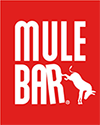
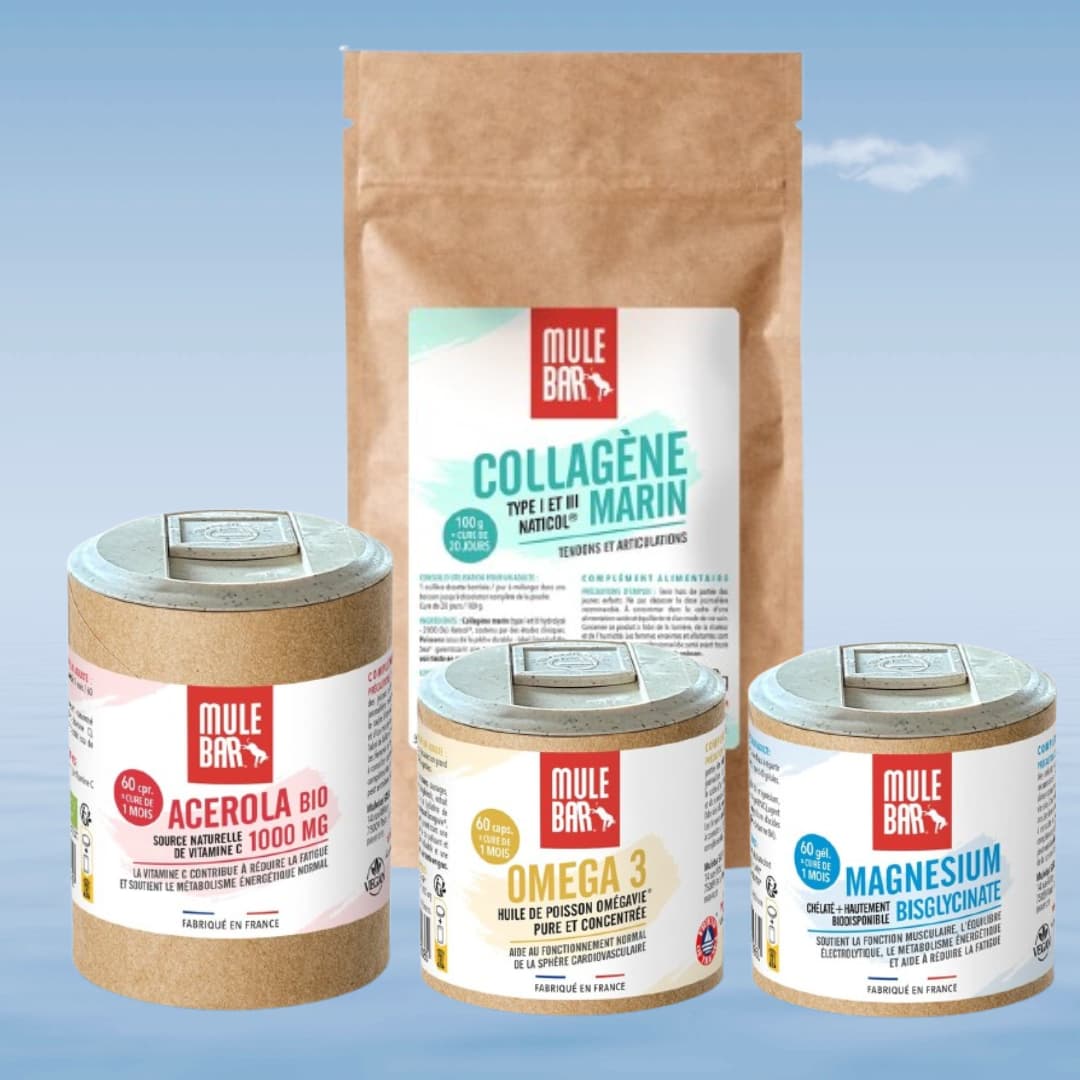

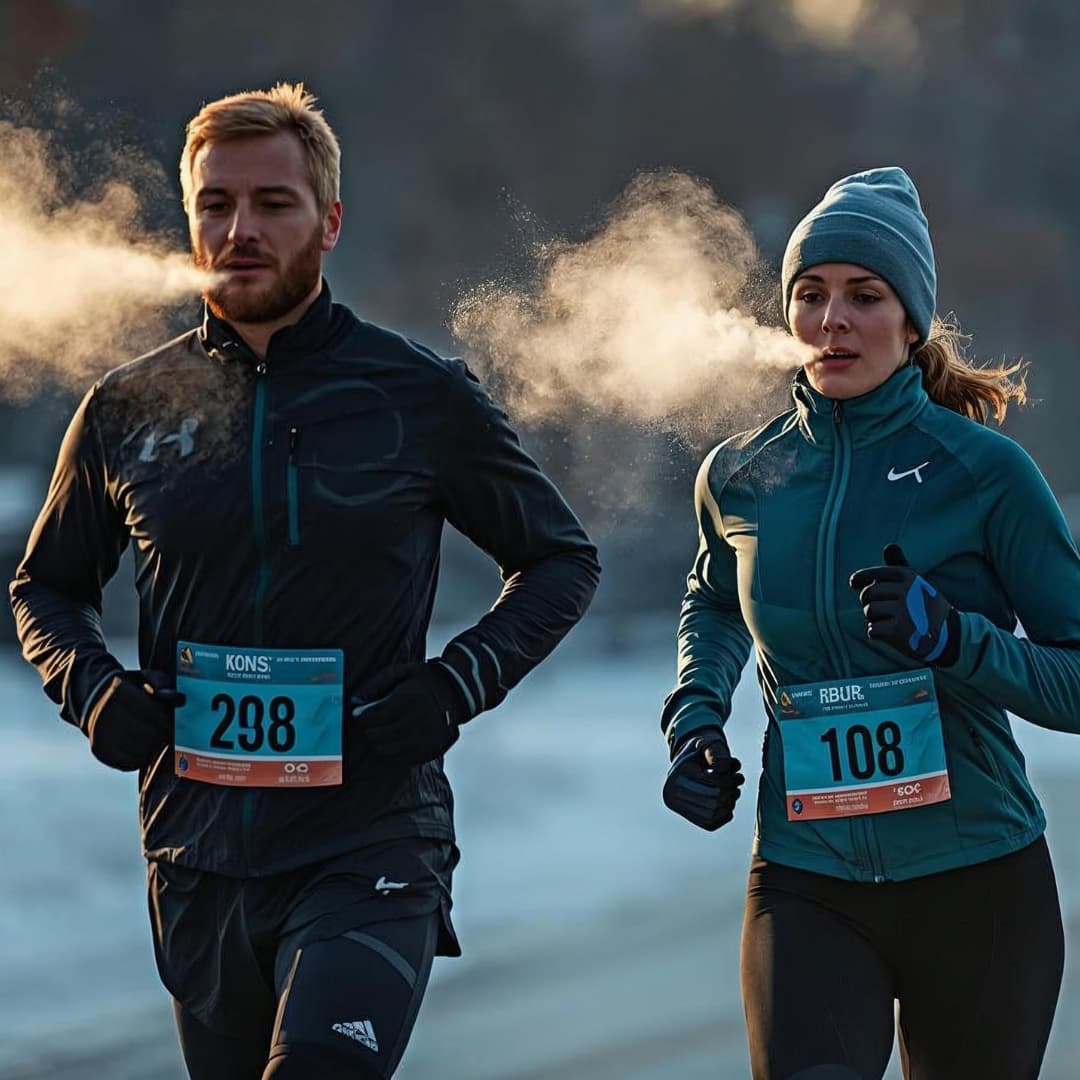
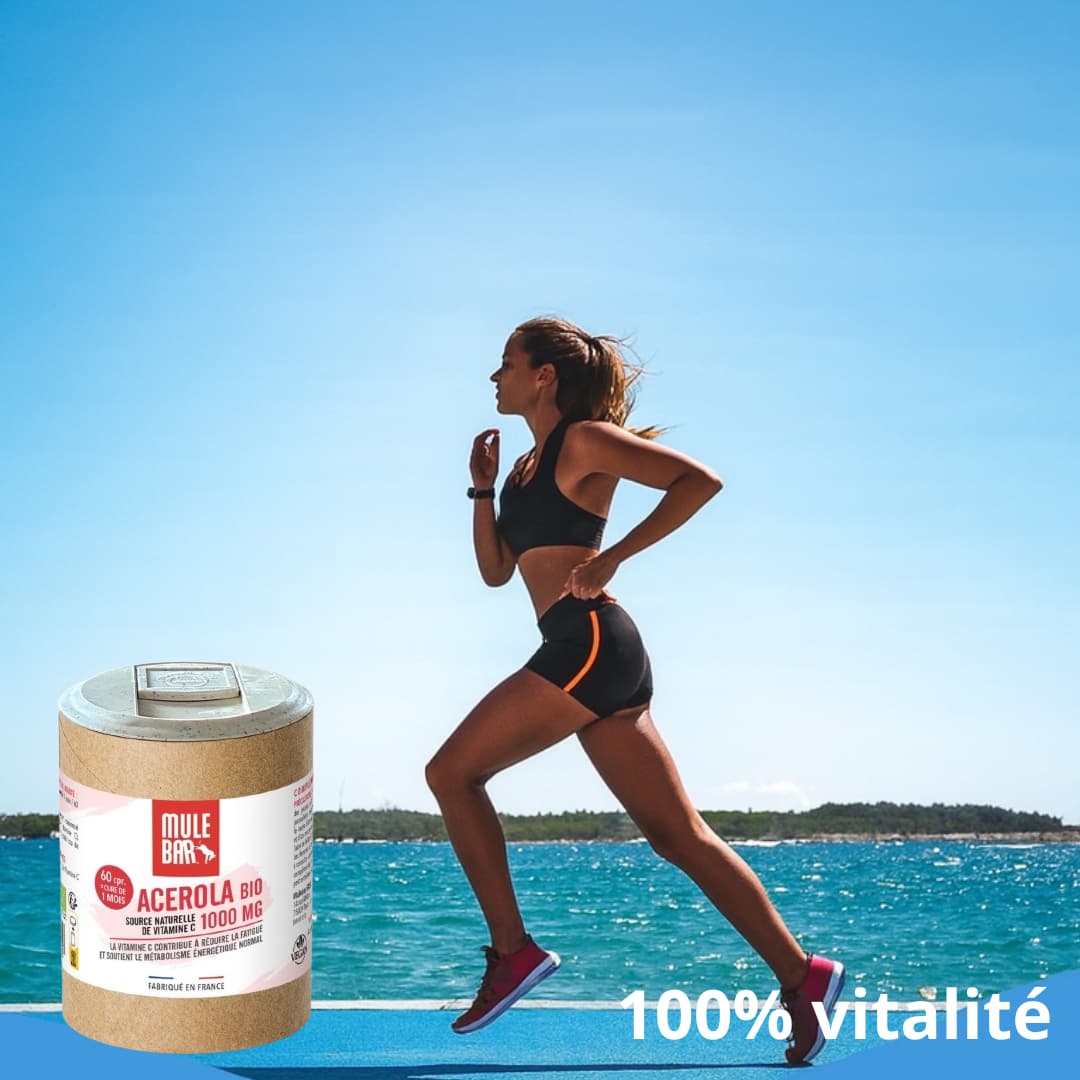
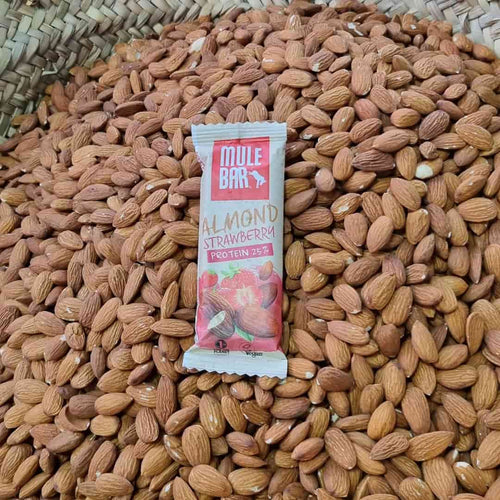
Leave a comment
This site is protected by hCaptcha and the hCaptcha Privacy Policy and Terms of Service apply.